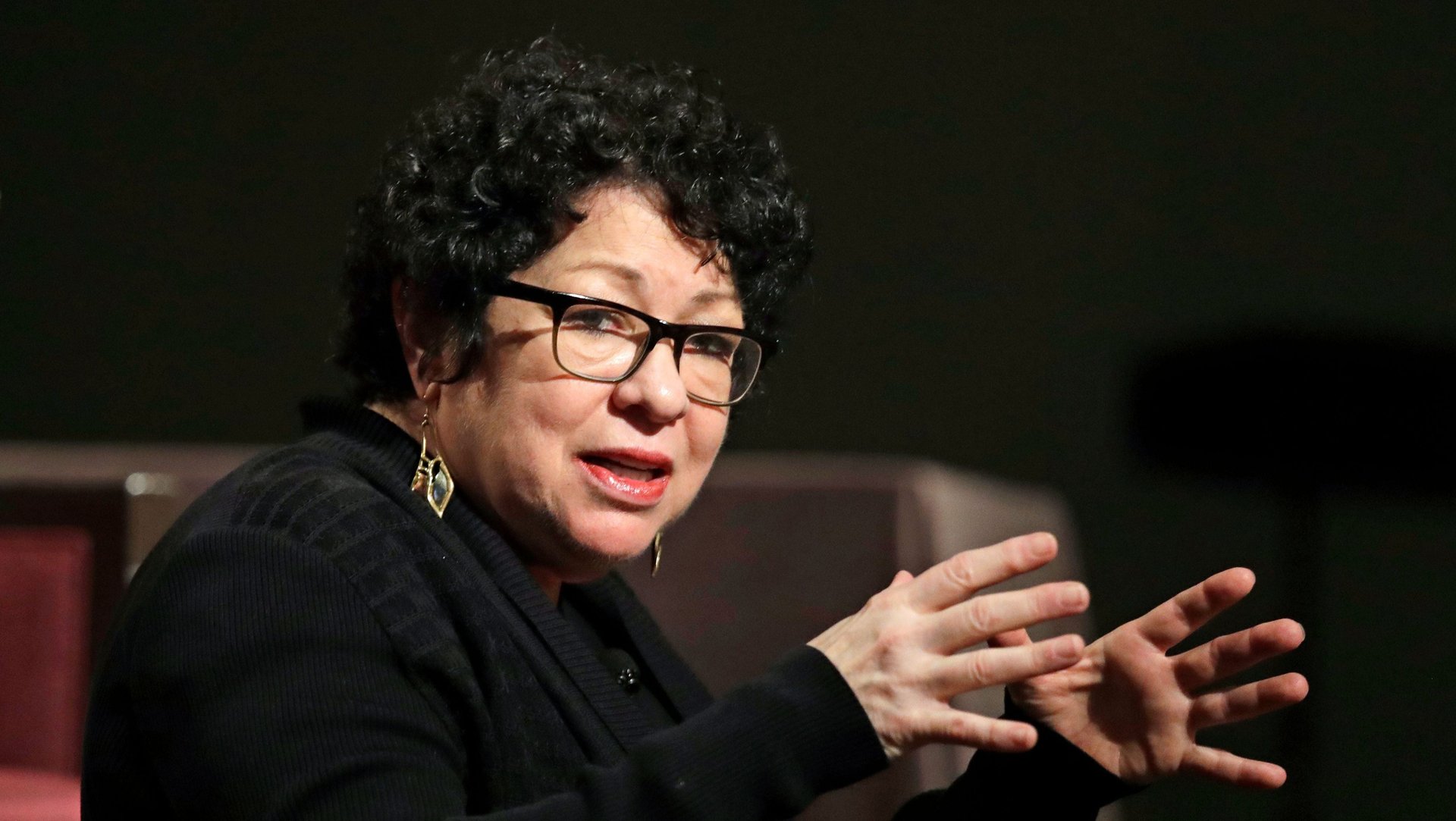Supreme Court justices love to quote Dickens to oppose solitary confinement
The US Supreme Court has rejected another case that would make the justices consider the constitutionality of solitary confinement in prison. The matter gave justice Sonia Sotomayor an opportunity to criticize the practice—and use the words of Charles Dickens to help her argument.


The US Supreme Court has rejected another case that would make the justices consider the constitutionality of solitary confinement in prison. The matter gave justice Sonia Sotomayor an opportunity to criticize the practice—and use the words of Charles Dickens to help her argument.
The case, brought by three former Colorado inmates, specifically referred to their right to outdoor exercise while in solitary—or as Sotomayor put it, “the denial of even a moment in daylight for months or years.”
Sotomayor wrote a “statement respecting the denial,” in which she agreed with the decision not to take the case, arguing that it was not well-suited for the high court. However, she writes, the issue “raises deeply troubling concern.”
Her statement describes the conditions the inmates were held in, 23 hours a day in a tiny cell with an equally tiny window. They were allowed to exercise outside for just one hour a day in what is known as a “dog cage,” an area barely larger than a cell itself.
A report released this week from the Yale Law School and the Association of State Correctional Administrators, estimates the number of inmates held in solitary confinement in the fall of 2017 was 61,000. More than 4,000 are mentally ill.
Sotomayor references former justice Anthony Kennedy’s opinion in a previous case, in which he quoted Dickens’ portrayal of the “ravages of solitary confinement” in “A Tale of Two Cities” (in general justices seem to like to quote the British author).
Here’s what Kennedy wrote in 2015:
Charles Dickens recounted the toil of Dr. Manette, whose 18 years of isolation in One Hundred and Five, North Tower, caused him, even years after his release, to lapse in and out of a mindless state with almost no awareness or appreciation for time or his surroundings. A Tale of Two Cities (1859). And even Manette, while imprisoned, had a work bench and tools to make shoes, a type of diversion no doubt denied many of today’s inmates.
Sotomayor writes that Dickens’ description in his novel was not an imagined one. In 1842, Dickens visited Philadelphia’s notorious Eastern State Penitentiary was documenting what he saw. She quotes from his “American Notes for General Circulation”:
[The prisoner] is led to the cell from which he never again comes forth, until his whole term of imprisonment has expired. He never hears of wife and children; home or friends; the life or death of any single creature. He sees the prison-officers, but with that exception he never looks upon a human countenance, or hears a human voice. He is a man buried alive; to be dug out in the slow round of years; and in the mean time dead to everything but torturing anxieties and horrible despair.
Then she continues, in her own words:
Dickens did not question the penal officers’ motives. He concluded, rather, that they did “not know what it is that they are doing” and that “very few” were “capable of estimating the immense amount of torture and agony which this dreadful punishment, prolonged for years, inflicts upon the sufferers. The pain caused was invisible and inaudible, such that “slumbering humanity” was “not roused up” to put a stop to it. We are no longer so unaware. Courts and corrections officials must accordingly remain alert to the clear constitutional problems raised by keeping prisoners like Apodaca, Vigil, and Lowe in “near-total isolation” from the living world, in what comes perilously close to a penal tomb.
With no cases surrounding solitary confinement on the court’s horizon, it might be some time before the court considers the practice that “comes perilously close to a penal tomb,” especially with Kennedy, who opposed it fiercely, gone from the bench.